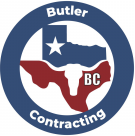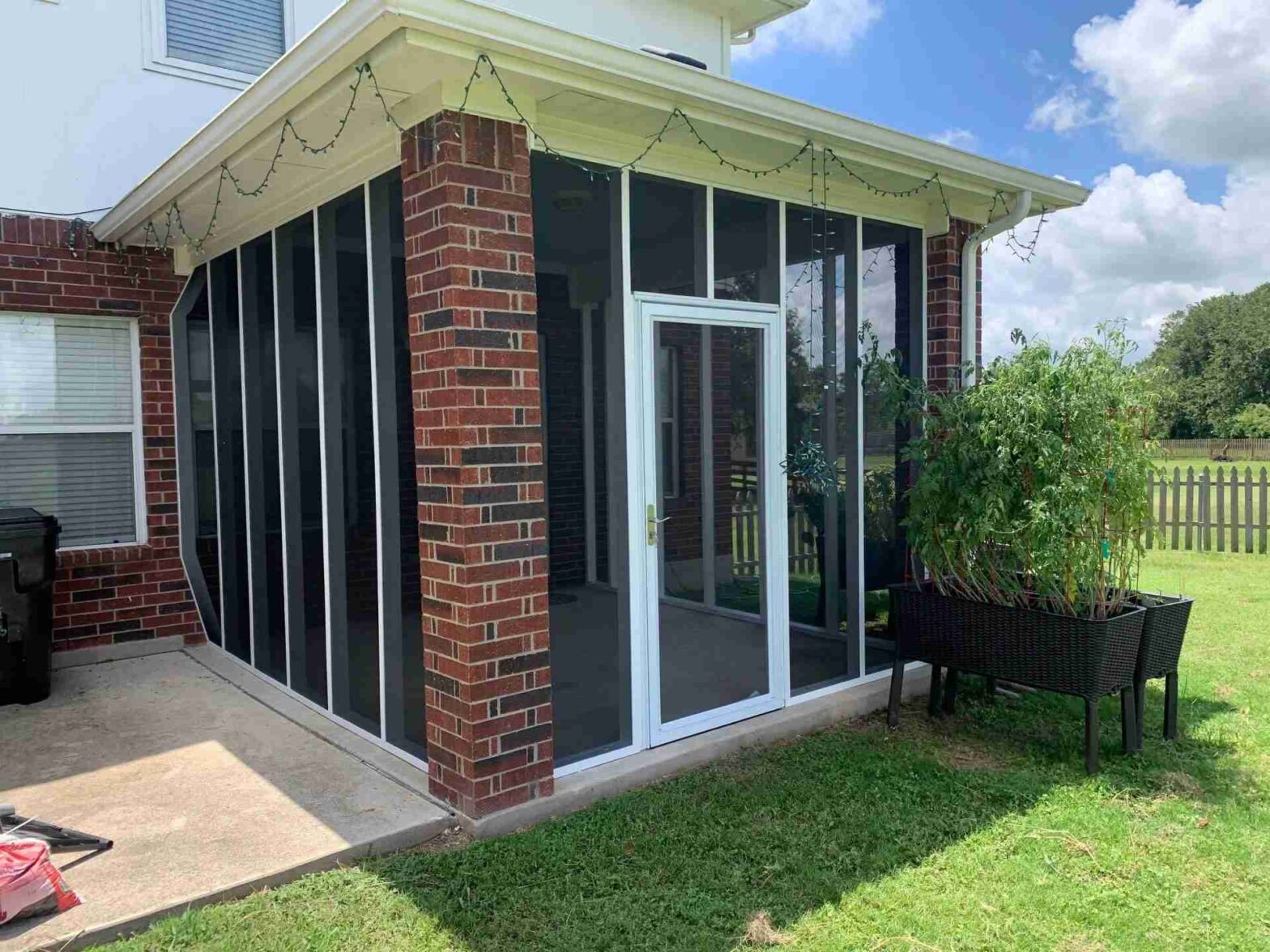Screen porches are one of those things that make your outdoor living experience all come together. Especially in Texas where mosquitos and other bugs can become a real nuisance while you’re just trying to relax on your porch. If you have considered installing a screen porch or are just curious if one is right for you, below are a few things to consider when it comes to options and what you might expect to spend on a screen porch (also referred to as an enclosed porch) in Bastrop County, Texas.
If you have been dreaming of a screen porch at your house to really have that ultimate space to relax and make memories with your friends and family, then we want to make sure you go into the decision-making process well-informed. When constructing a screen porch on your back patio, there are several options to consider and some of those options can significantly influence the price. Below, we will lay out some options to give you a better gauge of what to expect when investing in a screen porch.
Do You Need A Roof For Your Porch?
In most situations, odds are you already have some type of porch overhang or structure that is covered that you are looking to screen in. However, if you just have a patio – say a concrete slab or a paver patio and you are looking to screen it in, you can expect to invest more to cover the area before screening it. Most projects we do like this at Butler Contracting start in the $15,000 range and can go as high as $50,000 depending on the size and scope of the porch.
What If You Already Have A Roof Over Your Porch?
It’s great if you already have a roof over your porch. It will be substantially less of an investment to install a screen porch if you already have a roof or overhang structure. This simplifies the process and the most common scenario is to enclose 2 to 3 walls on the back of the house in order to construct a screen porch.
What Options Do I Have For My Screen Porch?
There are a multitude of options when it comes to a screened-in porch. You can screen in from the bottom to the top, the floor to the ceiling, you can have a pony or knee wall or you could even elect to close it in even more and add windows that open and close creating more of a sunroom. There are various screen types available on the market. There are even different types of doors you can install on your screened-in porch.
Screen Types
One of the most important decisions you will need to make for your screen porch will be the type of screen to install to best suit your needs. Screen comes in either aluminum or vinyl and there are drawbacks to using both products. Aluminum screens are durable but not as flexible as vinyl. For example, if a dog, cat, or person hits the aluminum screen hard, it will dent or crease the screen, leaving permanent damage. If the same was done to a vinyl screen (vinyl is more flexible) you wouldn’t see any evidence of the collision. There are also options with a vinyl screen such as UV filtration that you simply won’t get with an aluminum screen. Vinyl screen doesn’t dent, but one drawback is that it is much easier to burn a hole in due to the nature of the material.
Below are the most common screen options our customers select:
Standard Insect Screen
This material is made from vinyl and does a great job at keeping out insects. Another advantage of this type of screen is that you’re getting great visibility while looking out of your screen porch. Insect screen is simple, economical and gets the job done.
Solar Screen
Solar screens are great! Some style options can filter out up to 90% of UV light! This is great if you have a south or west-facing porch during a Texas summer. This screen can reduce the temperature inside your screen porch by 10-15 degrees and is available in multiple color options. The darker the color, the more UV-protected it becomes. Another advantage of using a solar screen as some of our customers have reported is additional privacy. The darker screen offers greater privacy, reducing visibility from the neighbors. Perhaps you live on a corner lot and the street traffic can see right into your screen porch – a solar screen can give added privacy. One of the drawbacks of solar screens is that they reduce visibility when you’re trying to see out of your screen porch because they do such a great job of filtering out UV light and adding privacy.
Pet Screen
Pet screen is among our customers’ favorites and for good reason. This screen is tough and durable as you might imagine and it would be with a name like a pet screen. Let’s face it, pets have a mind of their own and can be destructive at times. Pet screen is a very durable product and is very difficult to rip or tear, so if Fido gets overly excited or Friskers decides to climb the wall, this screen offers maximum protection. Another advantage of the pet screen is that it is durable for kids, too. It will stand up to the smashing of a Tonka truck! If you have kids or grandkids who plan to utilize this space, this may be the screen for you. Another added advantage is that you get great visibility and insect protection with a pet screen. On the downside, while it offers a little better UV protection than a standard Insect screen, unfortunately, it is not available with UV protection.
Floor to Ceiling Screen Porch
This is the most common and affordable type of screen porch we install. There are a couple of ways to install a screen porch like this – you can frame it with wood and install your screen with a door, giving you a simple but effective screen porch. You will have to stain or paint the wood to ensure your investment stands up to the weather long-term. The 2nd most common option is to install a metal track system generally made from aluminum that can be retrofitted into the space. The nice part is these tracks come in a variety of colors and the painted aluminum lasts a long time and is not prone to wood rot and does not need consistent maintenance like wood does. You will invest more upfront but have less maintenance over the years.
Below is the cost of a floor-to-ceiling screen porch if you choose a basic design. Prices below exclude painting or staining.
8×10 Wood Framed Starting at $3,500
8×10 Metal Framed Starting at $7,500
10×16 Wood Framed Starting at $7,500
10×16 Metal Framed Starting at $15,000
Screen Porch with a Pony or Knee Wall
As mentioned in the floor-to-ceiling screening option, you can construct the screen porch to have a knee or pony wall. This allows for additional protection at the base to prevent things from running into the screen or it getting kicked. These knee or pony walls also offer some other options such as electrical outlets to be run in the walls, and a place to construct a window sill or shelf to put plants or other decorations on. These knee and pony walls can also give your screen porch an added pop in aesthetics. Regardless if you go the wood or metal-framed route, there are options.
Below is the cost of a knee/pony wall screen porch if you choose a basic design. Prices below exclude painting or staining.
8×10 Wood Framed Starting at $5,500
8×10 Metal Framed Starting at $9,500
10×16 Wood Framed Starting at $9,500
10×16 Metal Framed Starting at $18,000
Screen Porch With Windows
If you are thinking of a more enclosed-style porch with windows that can be opened up to allow airflow, you can expect to invest substantially more depending on the level of finish out you are looking for. If you are looking to match the exterior of the house and finish out the inside into a more luxurious living space, it is not uncommon for customers to spend in the $25,000-$60,000 range to get a completely finished out space. It could be a little bit less or even more depending on options, design, and finish selections. The type of windows, door and if you want the space climate controlled will be big factors in the price point.
Permitting
Regardless of what option you select, depending on where you live there may be some permitting requirements. If you live in Bastrop County, you will need to get a permit for your screen porch project. If you live in an HOA, you will need to get a permit from the Architectural Control Committee (ACC) to ensure your screen porch style selection meets all of the deed restrictions and the general guidelines of the neighborhood. Your contractor can help you with the permitting and in some cases, it is required that the contractor doing the work pulls the permit.
How Do I Get My Screen Porch Started?
We hope you gathered some information in this article that will help you make a decision on the screen porch that is right for you. If you are ready to move forward with a project, we would love to speak with you. Get the easy process started by sharing a video of your space and let’s start dreaming. Click here to submit a project request. You can always call our office to get started as well at 844-628-8537.



